There are many reasons to visit South Africa, but for anyone whose heart beats faster for flowers, there is this hint: Take a deep breath, exhale slowly, and book a trip any time from late August through September, when the summer-dry expanses of the West Coast region and its hinterland erupt in spring’s wildflowers after soaking winter rains.
Because of the staggering diversity of floral displays spread across the country’s Western and Northern Cape provinces, the choices of destinations can be overwhelming. The tiny town of Darling in the Western Cape, just an hour’s drive north of Cape Town, is at once accessible, hospitable, and bursting with a variety botanical hotspots. Waylands Wildflower Reserve is just one of them.
Above: Wild arum lilies—Zantedeschia aethiopica— at Waylands Wildflower Reserve, near Darling.
Waylands Wildflower Reserve, about three miles southeast of Darling, is one of several local reserves open to visitors during peak wildflower season. Last September I visited with my evolutionary-biologist friend, Jacqueline Bishop, who loves flowers as much as I do, but who knows more about them as well as the creatures with which they co-exist. (It’s like walking with Google, except more fun.) Our destination that day was the town itself, and the Darling Wildflower Show, held annually over the third weekend of September. But at Waylands we became side-tracked, in the best possible way.
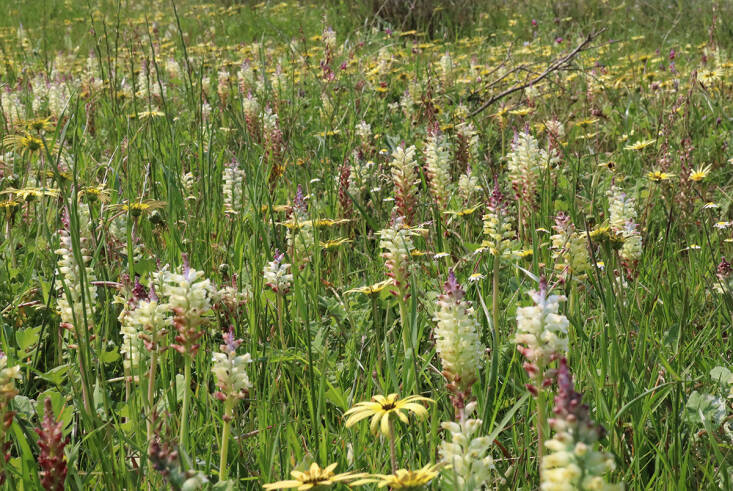 Above: A flock of Lachenalias.
Above: A flock of Lachenalias.
 Above: Heliophila africana tilting on slender stems.
Above: Heliophila africana tilting on slender stems.
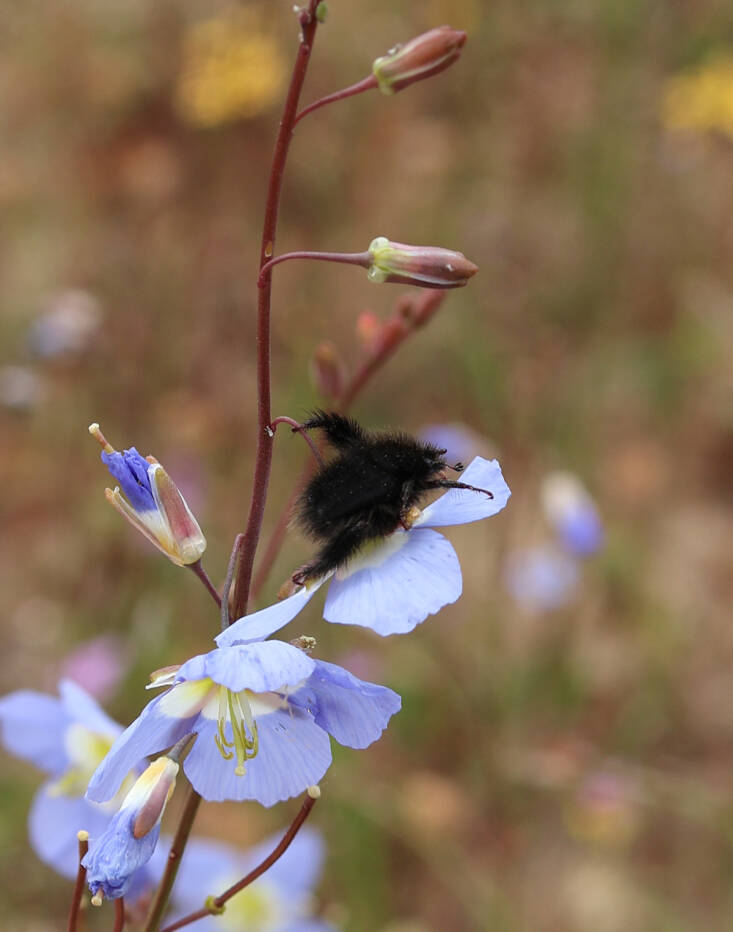 Above: Shaggy monkey beetles are important pollinators of spring’s ephemeral wildflowers.
Above: Shaggy monkey beetles are important pollinators of spring’s ephemeral wildflowers.
 Above: Geissorhiza radians.
Above: Geissorhiza radians.
Created in 1922 by Frederick Duckitt, Waylands is one of the oldest wildflower reserves in South Africa. This pocket of critically endangered Renosterveld remains on land farmed by the Duckitt family since 1865. (Closer to town vast greenhouses accommodate their orchid business, which exports exotic orchids globally. It is open to the public during this weekend, and we were sustained there by some very good pannekoek, crêpe-like pancakes filled with cinnamon and sugar and served with lemon.)
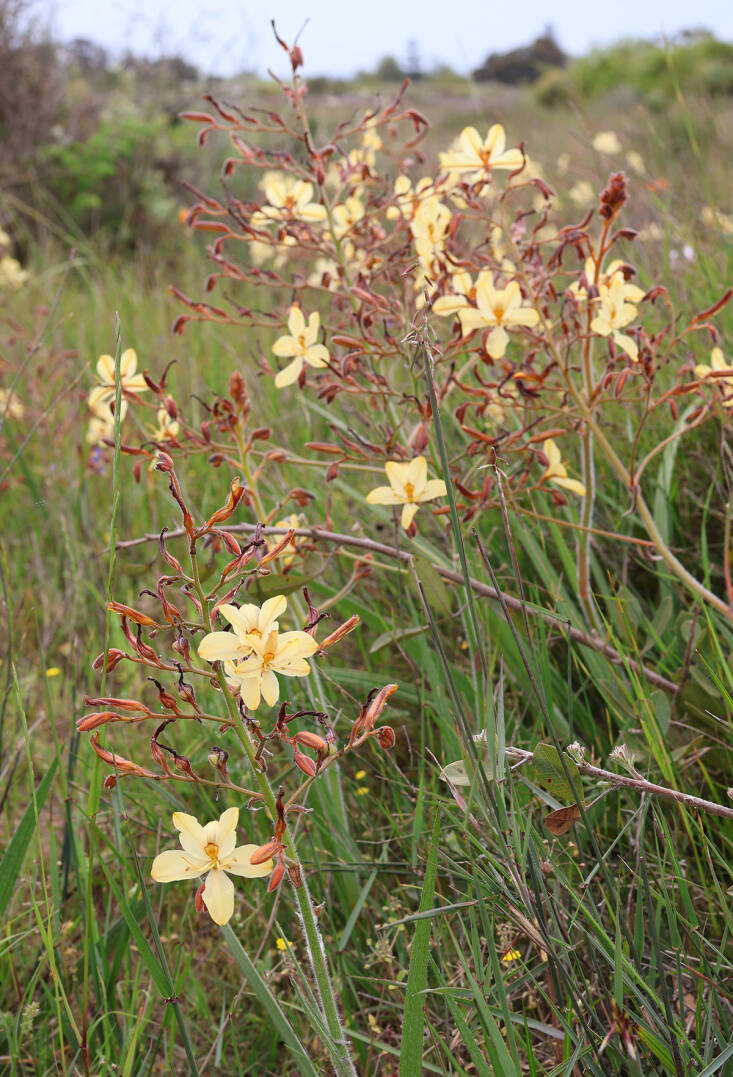 Above: Common butterfly lily—Wachendorfia paniculata—thrives after fire.
Above: Common butterfly lily—Wachendorfia paniculata—thrives after fire.
Over 300 species of wildflowers have been recorded at Waylands, whose farming methods help conserve one of the most threatened habitats in the Cape Floristic Region (which is smallest of the world’s six plant kingdoms, but the mightiest in terms of diversity). Grassfed cattle and sheep are allowed to graze here after the flowers have set seed, from November—early summer—to the end of April before the wet, Mediterranean winter sets in. This ancient seasonal grazing strategy, predating colonial history, allows these hoofed animals to actively spread seed, and to turn bulbs. And every four to seven years, intentional fires are set in autumn, ahead of rain, to help regenerate plants that thrive after fire.
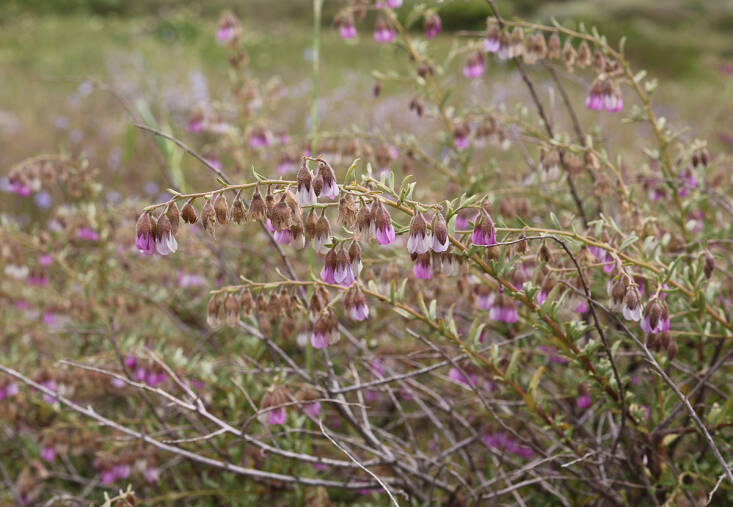 Above: Purple dollsrose (Hermannia trifurca) is a shrub that flowers in spring.
Above: Purple dollsrose (Hermannia trifurca) is a shrub that flowers in spring.
 Above: Shrubby Salvia is visited by a monkey beetle, whose furry coat catches pollen grains.
Above: Shrubby Salvia is visited by a monkey beetle, whose furry coat catches pollen grains.
The vegetation type here is Renosterveld, which falls within the Fynbos biome. The name is derived from an unassuming but prevalent shrub called renosterbos (which translates literally as rhinoceros bush)—Dicerothamnus rhinoceroti. It is characterized by shrubs, herbaceous plants, and a vast underground vault of seasonally-erupting geophytes, or bulbs.
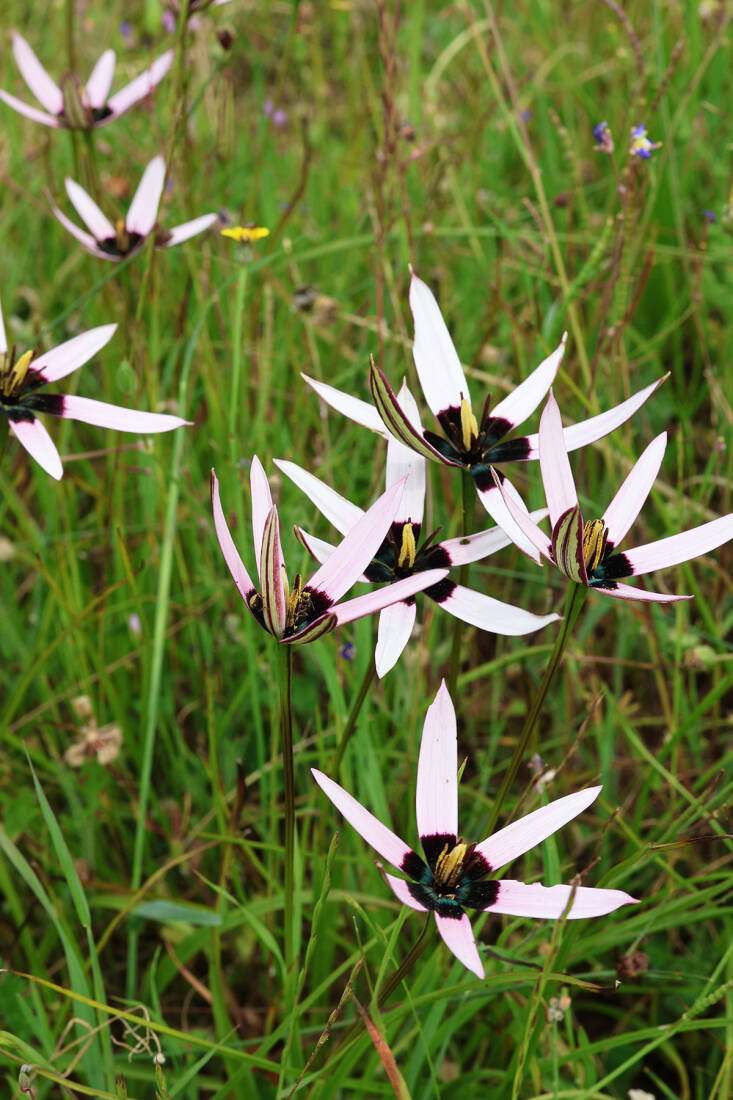 Above: Pauridia capensis, Cape stars, are geophytes that open when the sun shines and close when clouds gather.
Above: Pauridia capensis, Cape stars, are geophytes that open when the sun shines and close when clouds gather.
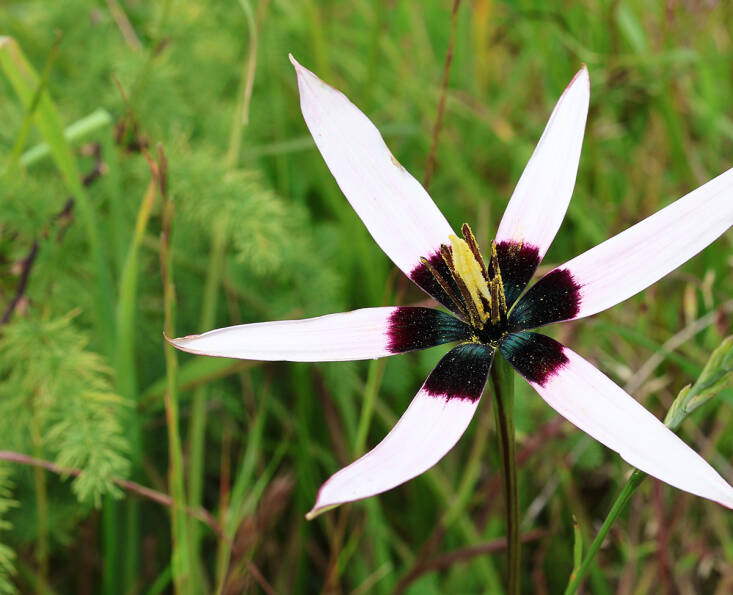 Above: The exquisite details of flower anatomy invite close attention.
Above: The exquisite details of flower anatomy invite close attention.
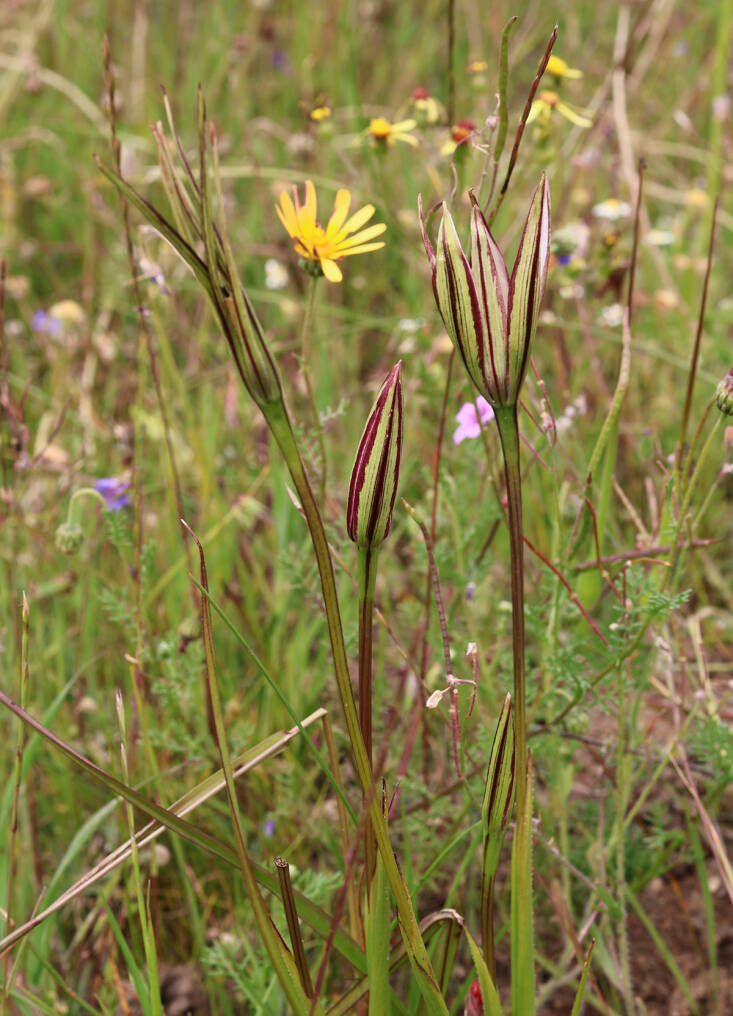 Above: Cape stars in bud.
Above: Cape stars in bud.
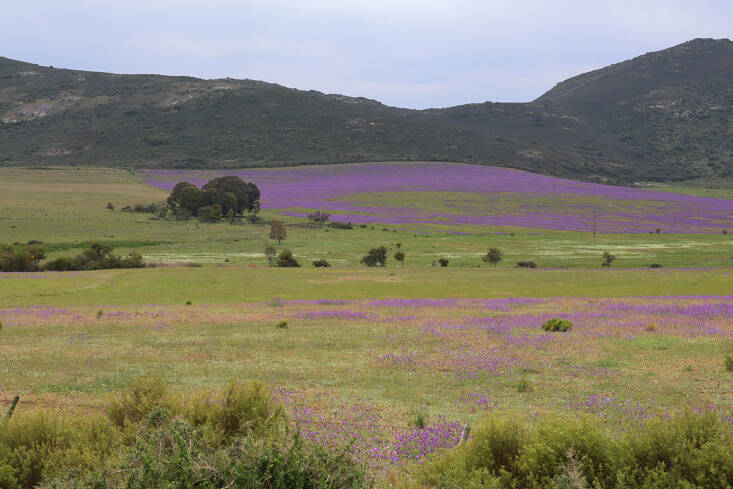 Above: Farmland, with Renosterveld on the hills. The flowers are highly invasive Echium plantagineum, purple viper’s buglos, Paterson’s curse, native to the Meditarranean.
Above: Farmland, with Renosterveld on the hills. The flowers are highly invasive Echium plantagineum, purple viper’s buglos, Paterson’s curse, native to the Meditarranean.
Renosterveld is critically endangered. Because it occurs on very fertile soils, often derived from shale or granite, at least 90% has been lost to farming; wheat farms, with some vineyards and olive orchards, dominate the area. Around Darling, a heart-stopping 1% remnant of Swartland Granite Renosterveld remains preserved in a patchwork of precious pockets where many threatened species survive.
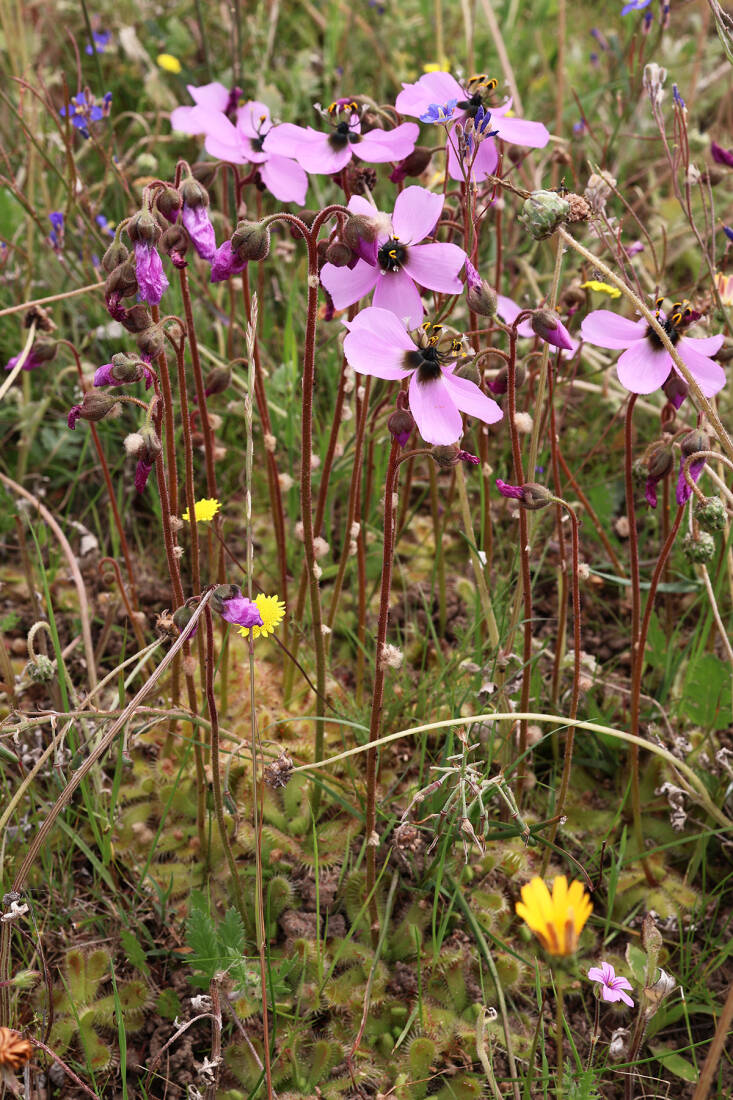 Above: The poppy-like flowers of a carniverous sundew, Drosera pauciflora.
Above: The poppy-like flowers of a carniverous sundew, Drosera pauciflora.
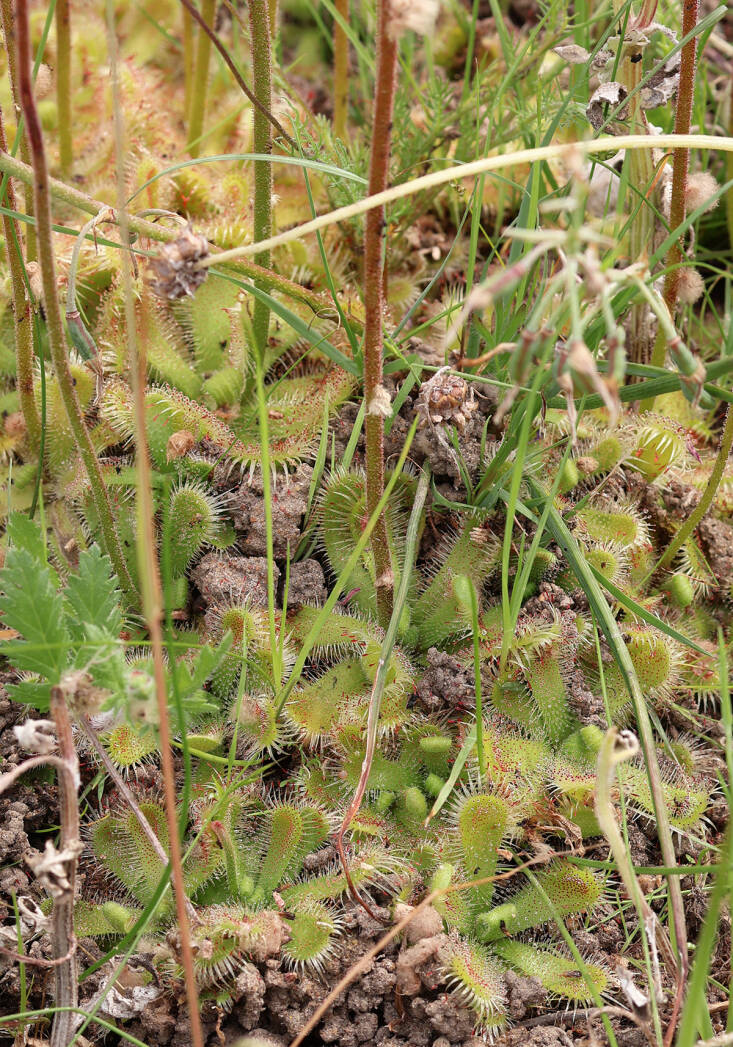 Above: The sticky basal rosettes of this sundew trap insects.
Above: The sticky basal rosettes of this sundew trap insects.
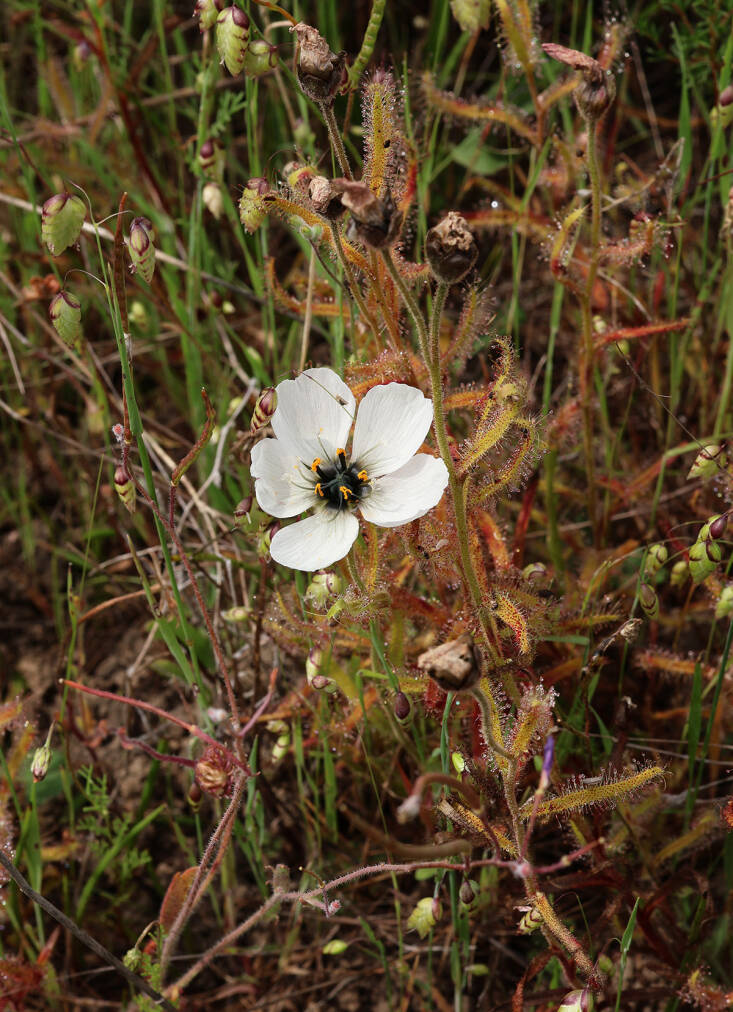 Above: Another sundew, Drosera cistiflora, with sticky leaves all the way up the stems.
Above: Another sundew, Drosera cistiflora, with sticky leaves all the way up the stems.
In spring (and starting in the wet winters), the green veld here erupts into bloom, in a kaleidoscopic display whose combination of broad view and jewel-like detail snatches your breath and catches your heart. On foot through the flowers, it is close to impossible to step without crushing something very beautiful. The diversity is so intense that a few footsteps yield dozens of species.
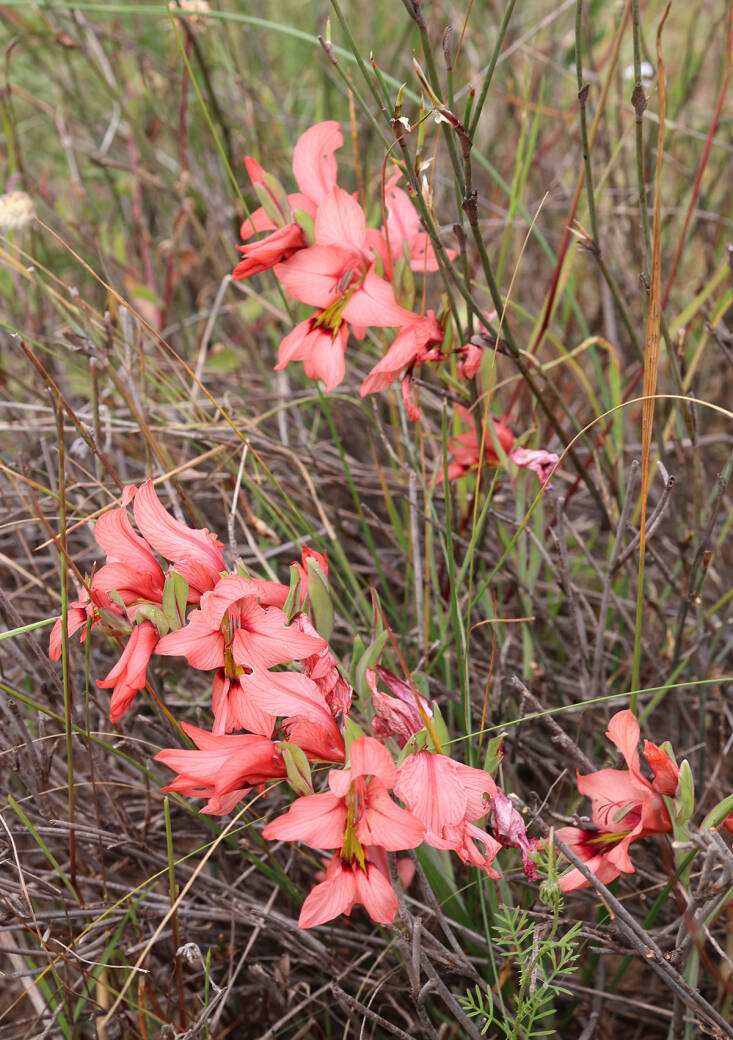 Above: Vivid Gladiolus meliusculus, known as pienk kalkoentjie (“little pink turkey”).
Above: Vivid Gladiolus meliusculus, known as pienk kalkoentjie (“little pink turkey”).
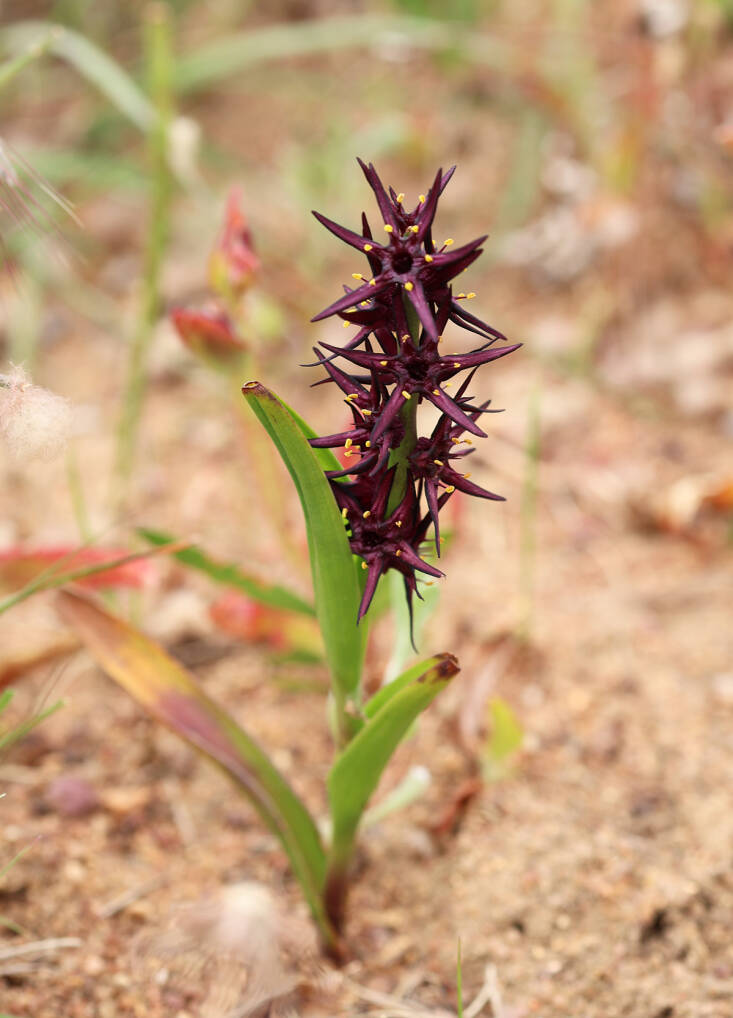 Above: Orchid-like, diminutive Wurmbea marginata.
Above: Orchid-like, diminutive Wurmbea marginata.
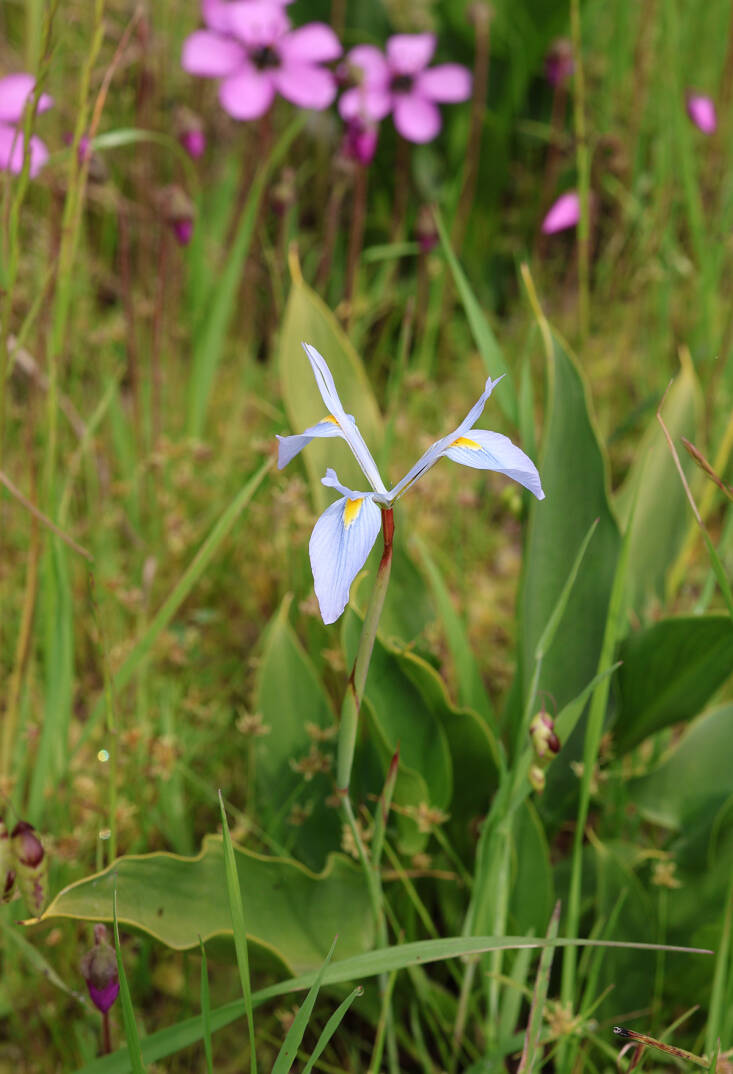 Above: The extremely rare Moraea ogamana, a member of the iris family.
Above: The extremely rare Moraea ogamana, a member of the iris family.
That day I photographed a Moraea that I uploaded only recently to iNaturalist, to help me with its identification (there are many of these beautiful African irises in the veld). It was identified as the near-extinct Moraea ogamana, “…known from only eight wild collections, five of which are now locally extinct due to habitat loss to agricultural expansion. Three known subpopulations remain on small, isolated fragments of lowland vegetation.” And there we were, on one of those fragments.
It was impossible for Jacqueline and me to walk that day without feeling keenly the loss of our dear friend Don Kirkwood. He had slipped and fallen to his death not quite a month before, while on a field trip to survey a critically endangered plant whose habit is to grow in precipitous places. A year before I had picnicked here at Waylands with his wife, Rosie. Now, the loss of a noted conservationist and a friend passionate about and dedicated to saving plants on the brink combined with the awareness that we were walking on a fragment of an extraordinarily rich landscape whose future is perilous.
But the flowers were here. We walked in happy and somber absorption among them, under a wide and changeable spring sky with the sound of nothing but birdsong and crickets around us, feeling the soft squelch of our feet tramping through damp earth, and finding yet another plant that we did not know.
See also:



